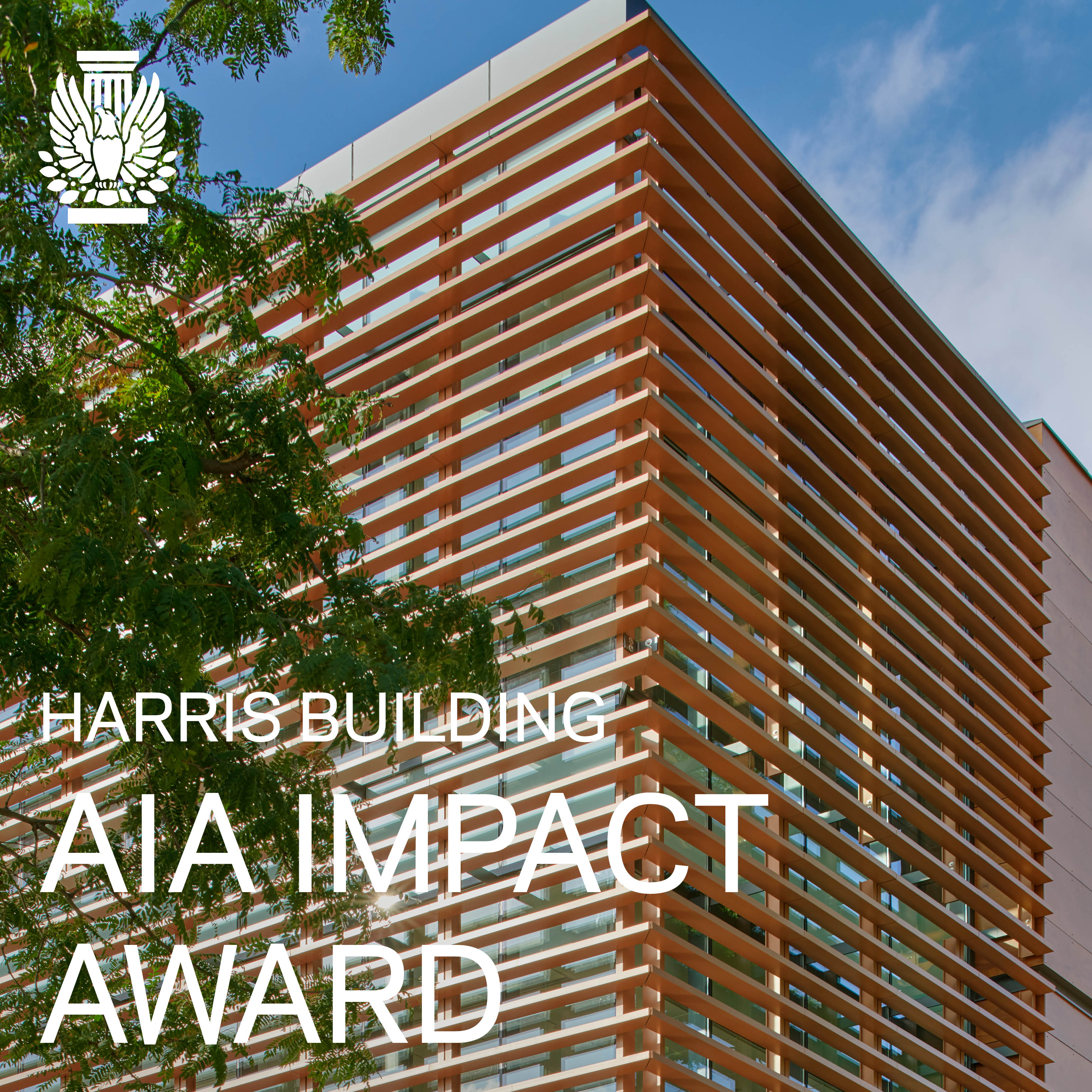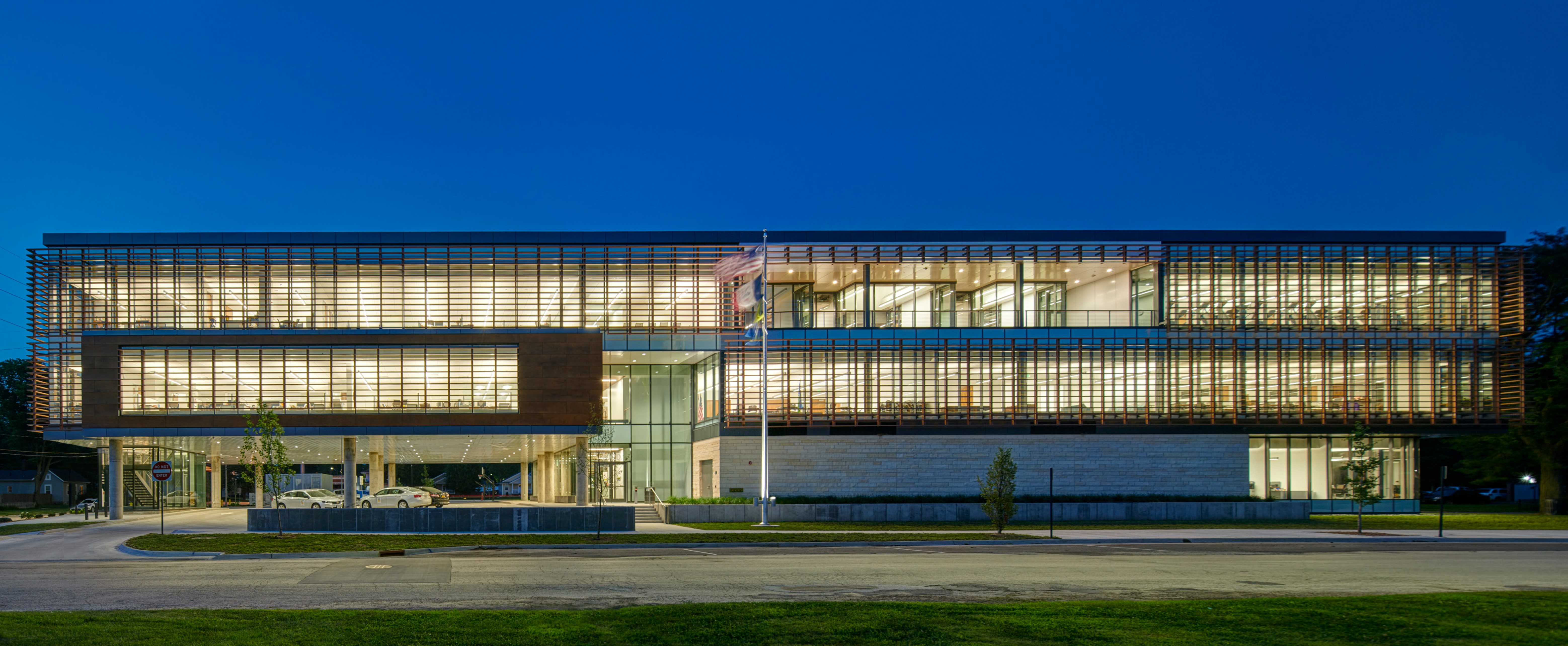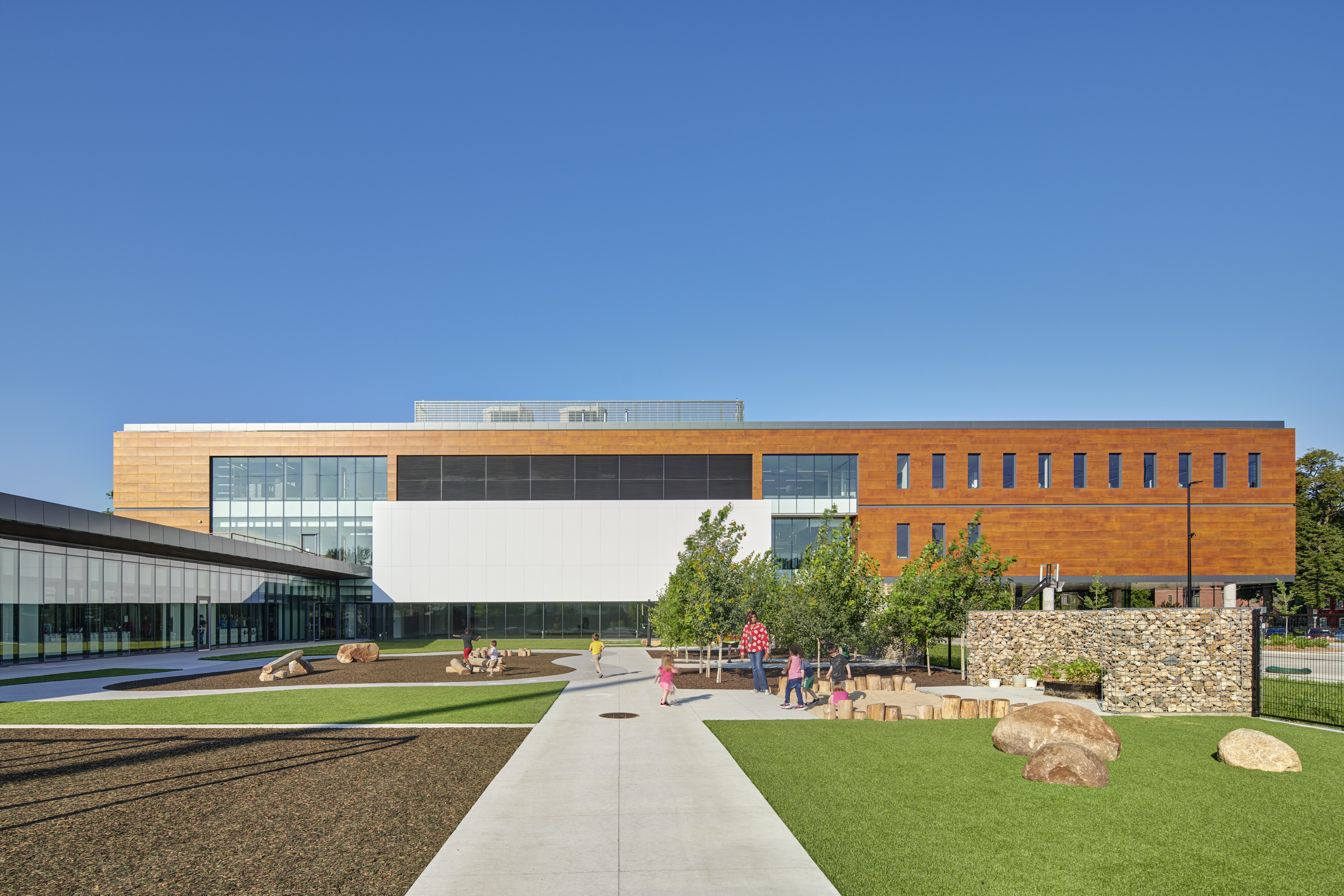Dr. Percy and Lileah Harris Public Health Building honored for impact by AIA

Linn County’s Dr. Percy and Lileah Harris Public Health Building was recognized with a Impact Merit Award by the America Institute of Architects Iowa Chapter during the spring conference in April. The Impact Award was developed to honor projects that directly benefit social, humanitarian, community or environmental causes.

The 63,000-square-foot Harris Public Health Building is situated in a once-flooded historic urban neighborhood. The building and site are resilient, sustainable, and inclusive. Community engagement was at the heart of the visioning and planning process for this building which is named after two local civil rights pioneers who dedicated their lives to health, education, and social equity.
“This project is representing low-income families dealing with poverty and providing access to resource. It is a very nice project with a nice mission, and we are happy to see it happening somewhere in Iowa. We love that it is not a cookie cutter design, but care was taken to design something for this group that you typically do not see at this level. Very in-depth program. The project has lovely spaces to gather and feels very welcoming and appropriate.” (Jury Comment)
The previous building, which also housed both departments, was approximately 14,800 square feet, lacked natural light, privacy, sound control, privacy for public clients, adequate classroom and storage space, and was in dire need of basic maintenance such as roof repairs that caused leaking into office and childcare areas. Because the building was used by both the departments of public health and child and youth development, programming for the new facility included a diverse mix of classroom and childcare spaces, offices, meeting rooms, clinics, and lab.
“Dr. Percy and Lileah Harris devoted their lives to their community, their family, and their passion for medicine and education. It is such a privilege to honor their legacies with this world-class Public Health and Child and Youth Development Center,” Linn County Supervisor, Ben Rogers said at the building’s opening in November 2019.
Organized as an ‘L,’ the single-story child and youth development wing reflects the scale, massing, and repetition of surrounding single-family houses. The classrooms, with wood ceilings and full-height glazing, are naturally lit, calming spaces that visually connect with the neighborhood to the south while maximizing teacher supervision through the hallway to the adjacent, enclosed playground courtyard. Many children attending the child and youth development program are from low-income families dealing with poverty, lack of access to resources, and trauma. These stressors are associated with lower levels of physical activity and higher exposure to crime and psychological stress. Contact with green spaces is thought to have a significant impact in stress reduction, increased physical activity and a role in human brain development – critical for children ages 0-5 especially. This age range is very vulnerable to healthy cognitive, mental, and physical development.
“This building will treat patients of all colors and backgrounds. We will treat immigrants and refugees. We will teach and care for all children. We will show them that a better world is possible,” said Linn County Supervisor, Stacey Walker.
The accessible playground encourages discovery with nature-inspired, simple play structures and an aspen grove. The playground, visually and physically protected from the parking lot by gabion walls with steel gates, has views into and access to the gymnasium. A white paneled wall above the gym serves as a projection screen for outdoor movies. Both indoor and outdoor play areas are open to community after hours and on weekends.
“The children in our center cannot wait to get out on the playground. They especially like to roll down the hill, walk across the logs and climb up the big rock. The teachers tell me that it takes critical thinking to make it to the top of the rock because there are limited ways it can be done. Several teachers told me that the children feel “powerful” when they achieve it.”
Targeting LEED Gold, the building is energy efficient, with a focus on the health and wellness. Picture windows into the mechanical room serve as a didactic tool. Above the educational wing, a green roof with a deck for staff looks over the playground.
On the east side of the public health wing, an ipe wood front porch overlooks the city. The porch creates an opening in the south elevation, which is clad in a sunshade that wrap around the north elevation and part of the south. Three conference rooms connect the porch to a two-story central circulation space with exposed steel and wood structure. The public health spaces are day-lit, welcoming, reassuring, and normalize a stressful clinical experience.
Both the child and youth development wing and the public health wing have remained operational during the COVID-19 Pandemic. Large classrooms allowing social distancing allowed the center to stay open and serve essential worker’s children not previously enrolled during this time due to extra space. Materials that were used to cover surfaces such as furniture, walls, counters, and floors are easily cleaned and disinfected. The public health spaces are day-lit, welcoming, reassuring, and normalize a stressful clinical experience.
The building was designed with the community in mind. During 2020’s summer Derecho in Iowa, the gym was utilized as a drop-off and pickup site for resources for families affected by the storm.
Read more about the barrier breaking couple, Dr. Percy and Lileah Harris, here.

